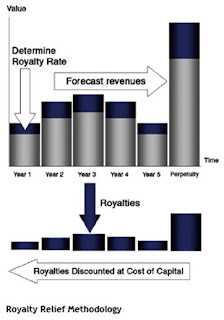Recently, the valuation of Surya Foods’ flagship brand PRIYAGOLD was done at Rs.1200 crores. This gave the Noida-based food company reason to cheer before the company floats an IPO later this year.
The valuation was done by Brand Finance. Now the important question is, how is this Brand Valuation actually done!! I am trying to explain this in through this post…
It is nearly twenty years since RHM, a UK-based food manufacturing company, placed the value of its brand portfolio on the balance sheet as part of its defense against a hostile takeover bid. While it was not the first instance of brand values being capitalized on the balance sheet, the context and subsequent result caused many accountants to fall off their stools in horror.
Since then, Brand Valuation has gained increasingly more importance over the years.
Brand Finance is an independent consultancy, headquartered in London, which focuses on the management and valuation of brands and branded businesses. Since 1996, Brand Finance has performed hundreds of brand valuations with an aggregate value of over $150 billion.
Brand Finance calculates brand values using the ‘Royalty Relief’ approach. This approach is recognized by technical authorities worldwide. The methodology used to value a brand is briefly explained in the text below.
The future revenues of the brand over a five-year explicit period are estimated taking market growth, competitive forces, historic sales and analysts’ projections, growth assumptions into consideration. A Royalty Rate is applied to the future revenues to determine the Royalties that would be payable for the use of the brand by a third party. The determined royalties are then discounted and the NPV calculated gives the Brand Value.

The Discount Rate is determined using the Brand Beta Analysis (proprietary of Brand Finance) that uses a Brand Rating corresponding to the brand. The Brand rating is similar to a credit rating and delivers insight into the underlying strength of the brand and illustrates how valuations require a robust analysis of a brand’s performance in order to determine its value.
According to Brand Finance, the top ten brands in the world by value are listed below in decreasing order of their brand value:
Coca-Cola
Microsoft
Citi
Wal-Mart
IBM
HSBC
GE
Bank of America
Hewlett-Packard
Marlboro


